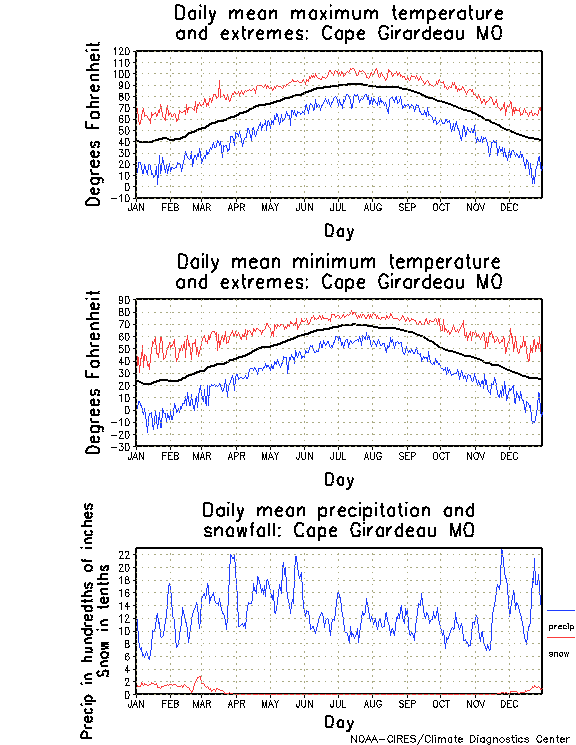


#Cape girardeau mo. 7 day forecast bar chart how to#
Similar to the the precedent set by the music industry, many news outlets have also been figuring out how to transition into a paid digital monetization model. When it comes to quality and accessible content, whether it be entertainment or news, consumers are often willing to pay for it. Meanwhile, if a stock moves on high volume, it means many people are involved in the trade and the trend is more likely to continue. If a stock moves on low volume, it means that few people are participating in the current price movement and the trend may not continue. Volume is the amount of stock that has been bought and sold within a specific period of time. Candle and stick chart: A visually appealing chart similar to a bar chart that shows OHLC data in an easy way.Bar chart: Plots the open, high, low, and close (OHLC) for each day using bars.Line: Plots the closing price of a chart over time, helping you to see how a price is behaving.There are three basic types of charts used: On a daily chart, it would be from the previous day’s close. The “high” is the highest price during the session, while the “low” is the lowest.ĭisplays the net change, positive or negative, from a previous price. “Open” is the price at the start of the day and “close” is the price at the end of the day. There are four key data points from a day’s trading: open, high, low, and close. Investors usually concentrate on weekly and monthly charts to spot long-term price trends. Traders usually concentrate on daily and intraday data to forecast short-term price movements.

Typically daily, weekly, monthly, quarterly, or annually. The symbol for the stock, as well as the specific exchange it trades on. It’s simply a price chart that shows a stock’s price plotted over a time frame, and it shows a few key sets of information: It’s the perfect step-by-step primer for someone that wants to learn the basics! The following infographic from StocksToTrade shares the three most common types of stock charts used, and the information typically found in them. Today’s post explains a concept that’s important for any person looking to dive headfirst into finance. We also often hear from wealth managers that want to help their clients understand the financial landscape better. It’s not uncommon for us to get messages from people that are attracted to the idea of investing, but that lack the essential training or confidence to fully dive in.įor example, we hear from millennials all the time – many are starting to save and know they need to invest, but they’ve never had to look at a stock chart before.


 0 kommentar(er)
0 kommentar(er)
